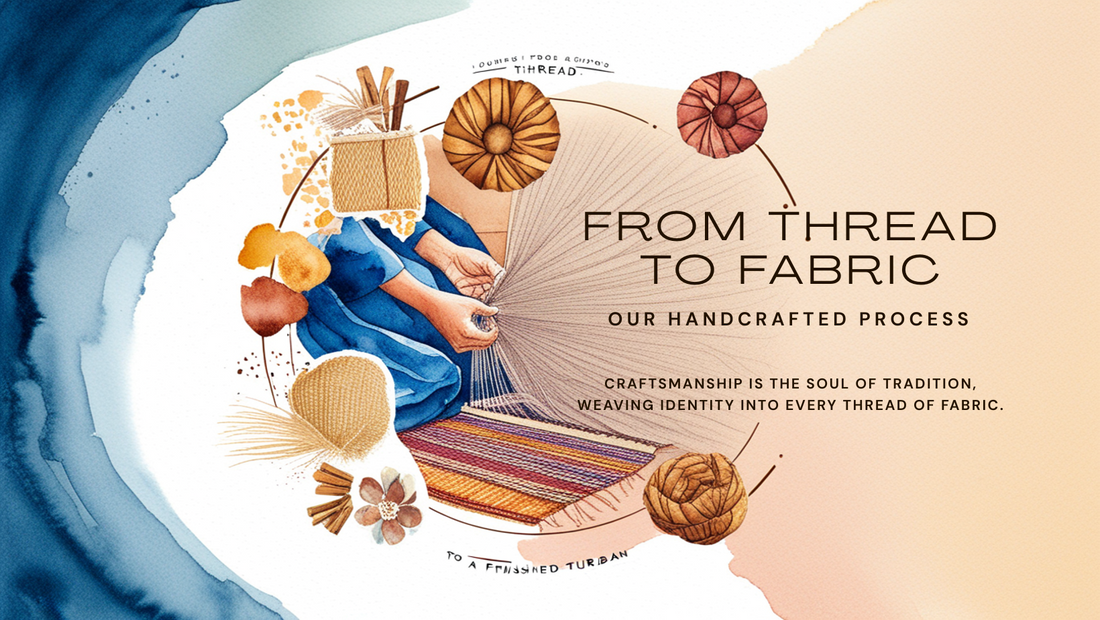
From Thread to Turban: Our Handcrafted Process Explained
Share
Every piece of fabric has a story—one that begins long before it becomes part of a garment, a turban, or a cultural symbol. The journey from raw thread to finished fabric is one of craftsmanship, tradition, and precision. Whether used for everyday wear or ceremonial attire, quality fabric starts with a deliberate, time-honored process.
Let’s unravel how humble threads are transformed into woven heritage.
1. Sourcing the Right Fiber
It all begins with the raw material. Natural fibers like cotton, silk, wool, and linen are selected for their softness, durability, and breathability. The origin of the fiber matters—Indian cotton, for instance, is renowned globally for its strength and texture.
Before spinning even begins, these fibers are cleaned and combed to remove impurities and align the strands for smoother processing.
2. Spinning the Yarn
Once the fiber is prepared, it moves to the spinning stage. This is where strands are twisted into continuous threads. The tightness of the spin affects not only the strength of the yarn but also the final texture of the fabric.
Whether spun by hand on a traditional charkha or in modern mills, this step is vital to ensure consistency and durability.
3. Dyeing the Yarn
Color enters the story here. The yarn is dyed using a variety of methods—natural dyes for earthy, organic tones or reactive dyes for vibrant, long-lasting hues. Each shade holds meaning: from saffron symbolizing strength to deep blues representing tradition and spirituality.
Depending on the design, the dyeing can happen before or after weaving. Pre-dyed yarn is used for patterned weaving, while post-weaving dyeing allows solid-color finishes.
4. Setting the Loom: Preparing the Warp and Weft
Now comes the weaving setup. Threads are arranged on a loom—warp threads run vertically, while weft threads are interlaced horizontally. The density, tension, and type of weave (plain, twill, satin) all impact the texture and feel of the final fabric.
Artisans often follow traditional weaving patterns that reflect their region’s heritage, whether it’s the fine weave of malmal or the intricate textures of khadi.
5. Weaving: Bringing Fabric to Life
With each pass of the weft and every motion of the loom, the fabric takes shape. Handlooms offer slow, detailed control—perfect for luxury and heritage textiles. Power looms, on the other hand, allow bulk production while maintaining precision.
At this stage, skill and rhythm are essential. A single mistake in tension or alignment can compromise the entire batch.
6. Finishing Touches
After weaving, the fabric is washed, treated, and sometimes brushed or calendered (pressed through rollers) to enhance smoothness. It's then inspected manually to remove imperfections and trimmed into precise rolls or panels.
From here, the fabric is ready to be shaped into turbans, garments, or textiles that carry not only design but also a deep sense of cultural narrative.
Woven with Intention
From a single fiber to a finished roll, fabric-making is more than production—it’s preservation. It holds centuries of technique, artisan pride, and storytelling in every thread. As fashion leans back into authenticity and sustainability, understanding this process helps us value what we wear—and who made it.
About Charkhi
At Charkhi, we honor this heritage by creating premium turbans and accessories rooted in traditional craftsmanship. Every piece we offer is a celebration of identity, culture, and community—woven with care, color, and character. From the first thread to the final fold, our commitment is to preserve the pride of Indian textile traditions while offering a modern experience for today’s generation.

